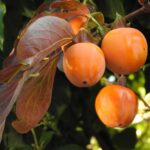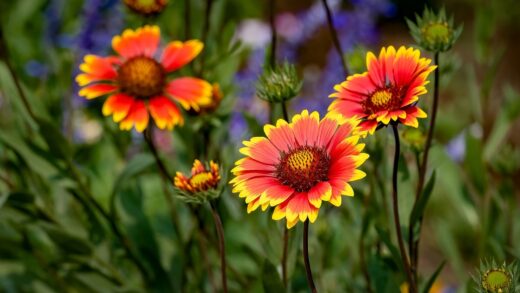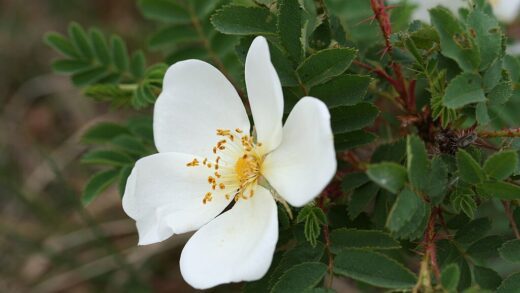The nutrient requirements of lavender are a specific area that often causes headaches for growers. We generally consider it an undemanding plant that thrives even in poorer, calcareous soils, but proper nutrient supply is crucial for abundant flowering and optimizing essential oil content. It is important to understand that excessive fertilization can be just as harmful as a lack of it, so the goal is a balanced and targeted nutrient supply. With the right expertise and attention, lavender will not only survive but will perform at its maximum potential for many years. It is therefore worth delving into this topic to achieve the best results.
In its natural habitat, lavender typically grows on lean, rocky, calcareous soils, which means it doesn’t fundamentally require high concentrations of nutrients. With this in mind, avoiding excessive nitrogen supply is of paramount importance. Too much nitrogen causes the plant to enter into vigorous vegetative growth at the expense of flowering. As a result, the plant grows tall, but the flower yield will be lower, and the quality of the essential oil content may also deteriorate. The ideal soil pH is between 6.5 and 8.0, as the micronutrients important for lavender are more accessible in calcareous soil.
Phosphorus and potassium, however, play a vital role in the healthy development of lavender. Phosphorus contributes to strengthening the root system, which increases the plant’s drought tolerance and helps with the efficient uptake of nutrients. Potassium is responsible for the plant’s water management, improves its resistance to diseases, and stimulates flower formation. A balanced ratio of these elements is critical for maintaining the overall condition of lavender, especially during the flowering period. It is important to supply these elements in the correct form and at the right time to achieve maximum effectiveness.
Micronutrients such as boron, zinc, and iron are also essential for lavender, albeit in smaller quantities. A lack of boron, for example, can lead to weak flower stems, while an iron deficiency can be indicated by yellowing leaves, especially in calcareous soils. These deficiency symptoms can often only be detected with detailed soil analysis, so it’s worth taking the time for this. There are also special fertilizers optimized for lavender that can help prevent micronutrient deficiencies. According to expert opinions, soil testing is essential before you start any micronutrient supplementation.
The importance of optimal soil preparation
The foundation of successful lavender cultivation is proper soil preparation, which determines the plant’s health and productivity in the long run. It is worth conducting a soil analysis before planting to get an accurate picture of the soil’s pH, structure, and nutrient content. Lavender prefers loose, well-draining soils, so heavy, clayey soils should be improved by adding sand and compost. This step is critical for preventing root rot, which is one of the most common problems for lavender.
More articles on this topic
Correcting the soil pH is also part of soil preparation. If the soil is acidic, meaning the pH value is below 6.5, liming must be carried out. Liming not only raises the pH but also introduces calcium and magnesium into the soil, which are key elements for the plant. It is important to carry out liming before planting, even months in advance, so that the materials have time to integrate into the soil and take effect. Organic materials, such as well-rotted compost, improve the soil structure and increase its nutrient-holding capacity.
Although lavender does not require many nutrients, it is worth doing a basic fertilization at the time of planting. This does not mean that a large amount of nitrogen should be applied, but rather that the focus should be on supplementing phosphorus and potassium. Slow-release, organic-based fertilizers are ideal for this purpose, as they deliver nutrients to the plant gradually, avoiding excessive growth. A balanced, low-nitrogen fertilizer, such as an NPK ratio of 5-10-10, may be suitable. The fertilizer must be thoroughly worked into the soil before planting so that the roots can access it from the start.
Thorough soil preparation is not a one-time task but a process that is the cornerstone of cultivation success. Thanks to careful preparation, the plants will root faster and stronger, which provides greater resistance to diseases and environmental stress. On well-prepared soil, lavender requires less subsequent intervention, which means significant savings in both time and resources. Therefore, it is worth investing time and energy in this phase to enjoy the fruits of lavender cultivation in the long term.
Fertilization strategy tailored to the lavender’s growth cycle
The fertilization of lavender must be adjusted to the plant’s growth cycle, which is a complex but essential task for achieving maximum yield and quality. Different nutrient ratios are needed in the plant’s three main phases. In the vegetative growth phase, before flowering, the plant primarily needs nitrogen, but only in moderate amounts. To increase flowering and yield, phosphorus and potassium come to the forefront. Fertilization at the right time and in the right proportion is key.
More articles on this topic
In the spring, at the beginning of vegetative growth, it is advisable to do a light nitrogen supplement, which helps the development of shoots. This fertilization should preferably be in an organic form, such as compost tea or well-rotted manure, as they release nutrients slowly and gradually. However, it is very important not to use too much nitrogen, as this can be at the expense of flower formation, and the plants may become excessively tall. A balanced, low-nitrogen granulate can also be suitable.
In the period before flowering, the focus shifts to supplementing phosphorus and potassium. Phosphorus helps with the differentiation of flower buds, while potassium improves the color, fragrance, and quality of the essential oil content of the flowers. For this purpose, it is worth choosing fertilizers that have a higher phosphorus and potassium content. In the case of lavender, this phase usually falls in May-June, so it is worth carrying out fertilization during this period. After applying the fertilizer, watering can help the nutrients get into the soil.
After late summer pruning or during autumn preparation, a final fertilization may also be necessary. This fertilization serves to strengthen the plants before the winter period. At this time, potassium and phosphorus are also important, but nitrogen can be completely omitted so that the plant does not start another vegetative growth phase. Potassium increases the plants’ frost tolerance, and phosphorus supports the strengthening of the root system, which is the basis for a successful start to the next year. Proper, timed fertilization contributes to the vitality and longevity of lavender.
Practical advice and avoiding over-fertilization
When fertilizing lavender, the principle of “less is sometimes more” applies. Excessive nutrient supply, especially in the case of nitrogen, can cause serious problems. Too much nitrogen causes the plant to become lanky, its stems thin, and its resistance to diseases and pests decreases. In addition, flowering may fail, or poor-quality flowers may develop, which reduces the harvest yield and essential oil content. Always decide on fertilization based on soil analysis results and the condition of the plants.
One of the best methods for supplying nutrients to lavender is the use of organic fertilizers. Compost, well-rotted stable manure, or compost tea not only introduces nutrients into the soil but also improves its structure and microbiological life. These organic materials break down slowly, gradually releasing nutrients, so the risk of over-fertilization is minimized. A thin layer of compost spread on the soil surface after spring pruning can be an ideal solution for feeding the plants.
When using mineral fertilizers, always follow the manufacturer’s instructions and prefer slow-release, granulated products. Liquid fertilizers work quickly, but the risk of overdosing is higher. If you use a liquid fertilizer, always start with half the recommended concentration and monitor the plants’ reaction. In the case of lavender, to avoid excessive nitrogen, choose low-nitrogen, phosphorus, and potassium-rich preparations, such as those with an NPK ratio of 5-10-10 or 5-15-10. Lavender is not a “heavy feeder” plant, so a targeted, moderate nutrient supply is the key to success.
One of the most important signs of over-fertilization is an overly green color of the leaves, leggy shoots, and sparse flowering. If you notice these symptoms, immediately reduce or stop fertilization. In such a case, it is worth flushing the soil thoroughly with water to wash out the excess nutrients. The optimal fertilization strategy is a conscious, observation-based process in which the needs of both the soil and the plant are taken into account. The correctly chosen and applied nutrient supply guarantees the long-term health of the lavender and the appearance of abundant, fragrant flowers.




















